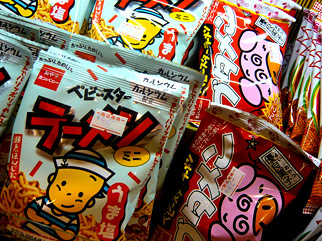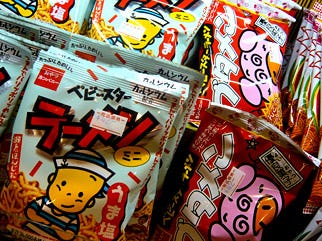Flexible plastic packaging market growing in Southeast Asia, says Frost & Sullivan
January 30, 2014

 According to a report by Frost & Sullivan, the Southeast Asian flexible packaging market earned revenues of over $1.41 billion in 2008 and estimates it to reach $2.22 billion in 2015. This is said to be due to robust growth in the food processing sector and the rise in demand for food exports as well as an increase in the affluence of the urban population who tend to spend more on packaged food. The countries covered in this research service are Thailand, Indonesia, Malaysia, the Philippines, and Singapore.
According to a report by Frost & Sullivan, the Southeast Asian flexible packaging market earned revenues of over $1.41 billion in 2008 and estimates it to reach $2.22 billion in 2015. This is said to be due to robust growth in the food processing sector and the rise in demand for food exports as well as an increase in the affluence of the urban population who tend to spend more on packaged food. The countries covered in this research service are Thailand, Indonesia, Malaysia, the Philippines, and Singapore.
"There has been a boost in the processed food industry in Southeast Asia, owing to the modern lifestyle food needs of customers," says Frost & Sullivan Research Analyst Sushmita Mahajan. "A mushrooming urban population drives demand for packaged food, consequently triggering the demand for packaging."
Increasingly, rigid packaging is being replaced by flexible packaging. The traditional benefits of rigid packaging can now be achieved with flexible packaging with the added advantages of lower cost and greater flexibility. Stand-up pouches and re-closable packs offer merchandizing advantages and other marketing benefits to fast-moving consumer goods (FMCG) manufacturers, similar to other rigid forms of packaging.
"There are many food manufacturing multinational corporations (MNCs) that have set up their manufacturing base in Southeast Asia and source their packaging needs locally," explains Mahajan. "This aids the growth of the packaging industry."
Flexible pouches with re-sealable closures consume lower energy and emit less greenhouse gases than rigid packaging. Flexible packaging also has a cost advantage over rigid packaging, including transportation, consuming about 17 percent less energy compared to rigid packaging. Furthermore, flexible packaging scores better than rigid packaging in terms of solid waste generation. This trend of favoring flexible packaging over rigid packaging acts as a key driver for growth.
Growth is likely to be driven by the rise in demand for packaged food from the affluent, urban middle-class as well as the intensifying need to meet the changing lifestyles of customers. The growth in demand for exports is another factor enhancing the food industry, consequently driving the food packaging industry. Changes in technology and the replacement of rigid packaging with flexible packaging also act as catalysts for market expansion.
The highly volatile price of raw materials is a primary concern for packaging manufacturers. When the price of raw materials escalates, the higher cost cannot be passed on to food companies completely due to fierce competition in the packaging market.
Heightened environmental concerns also pose a challenge, motivating packaging manufacturers to devise improved packaging solutions. This may lead to more widespread usage of bio-plastics in the future. In Southeast Asia, bio-plastics are currently perceived as a niche market, while being beset by cost and performance issues.
Polymer resins constitute 60 percent of the cost of production of packaging materials. Therefore, fluctuations in raw material prices are a key concern for packaging manufacturers.
A controversial issue concerning plastic packaging is that it is non-biodegradable and contributes to carbon emissions. Though most plastics used in packaging are recyclable, it is difficult to separate plastics by polymer type for recycling, especially the multi-layer film for packaging.
"Flexible laminates with multilayer packaging made up of similar polymers such as polyethylene (PE) and polypropylene (PP) or oriented polypropylene (OPP) and PE have different properties, making it complicated to recycle," explains Mahajan. "With improved technology, wider acceptance and improved economies of scale, expensive bio-plastics with applications currently only in niche areas will find wider application in food packaging."
Currently, rising environmental awareness has resulted in greater emphasis on the use of green products. Rapid technological strides and enhanced consumer education will result in the more widespread acceptance of bioplastics by Southeast Asian consumers.
"Mounting environmental concerns will reinforce efforts to increase the sustainability of packaging, thereby, opening up opportunities for degradable films," concludes Mahajan. "However, these need to be further developed in order to overcome performance limitations. Presently, the main obstacle to their widespread usage is their high price and most current applications for biodegradable plastics are niche with unique environmental considerations."
Source: Frost & Sullivan
Photo: Stefan
RELATED ARTICLES
New report examines food and beverage sustainable packaging gains
New breakthroughs in flexible-packaging recycling
.
You May Also Like


